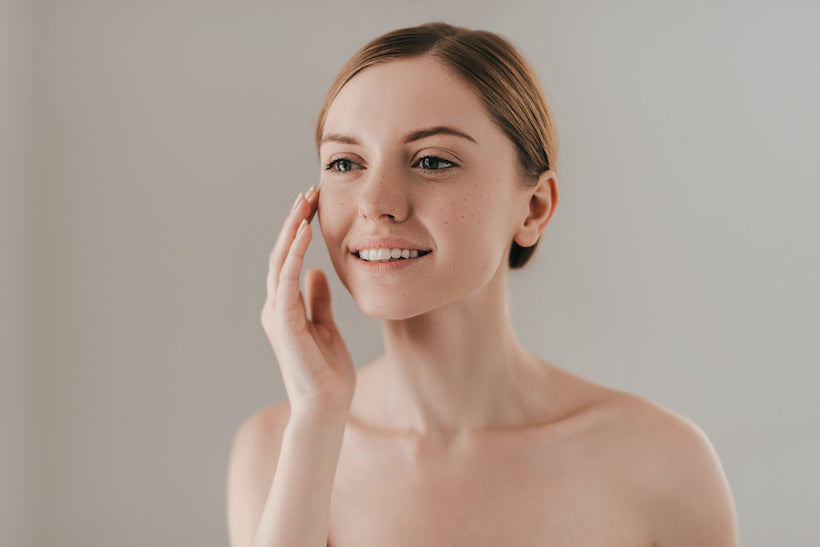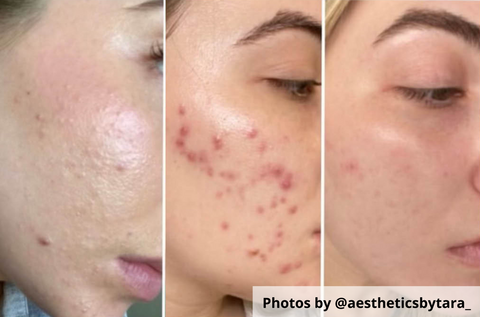What Is Skin Purging and Why Is It a Good Thing?

When you try new products, something happens (or at least it should). But that something is not always what you expect. It can look an awful lot like a breakout, and that can cause you to give up on your products before they’ve had a chance to work their magic. We’re talking about the purge. Here’s why you should embrace it rather than fear it.
What is a skin purge?

There’s a lot of stuff lurking under the surface of your skin. Microcomodones (the seeds of pimples) are forming deep in the follicle long before they become visible. It takes about thirty days for the pimple to appear. That’s the length of the average complete skin cell cycle.
Skin care products with active ingredients speed up the cellular timeline, pulling everything to the surface much faster, which can make it seem like you’re experiencing a sudden flare. Naturally, you blame the product, but in fact, the product is doing its job. This is the storm before the calm or what we like to call the worse before better paradox.
The job of ingredients like acids or vitamin A is accelerate cell turnover and boost exfoliation of dead skin cells. Ultimately, this process reveals fresh, new skin and helps keep new pimples from forming. But there’s that awkward in-between phase that is not so great.
How is a purge different from a breakout?
Technically, a purge is a breakout. It’s just one that’s been accelerated by products. All pimples start deep in the follicle as the result of dead skin cells mixing with sebum and creating an impaction, which feeds bacteria and inflammation and results in a blemish. Increased cellular turnover pulls impaction to the surface, revealing the blemish sooner.
Here’s where the real distinction lies. The cell turnover that hurried the pimple to the surface will also peel it away, so it disappears in less time than it normally takes for a pimple to form, emerge, and subside.
Are the times when your products might be the cause of a real breakout or a reaction? Yes. A product that contains comedogenic ingredients can clog pores resulting in a flare-up that has nothing to do with the process we’ve been describing. You may run across this if you’re using heavy creams or certain oils (coconut oil is a particularly popular offender).
Active ingredients can also cause some mild redness, dryness, and flaking that could be mistaken for a reaction. This is also part of accelerated cell turnover. However, if your skin is inflamed, raw, or painful, that is a sign that you need to back off. In this case, stop all except mild cleansing and a light, calming moisturizer like Allantoin Sedating & Hydrating Lotion until skin feels healed. Then resume every other day until skin becomes acclimated, and you can move to daily use. If your skin continues to have issues, move to a milder product.
Will new products always cause a purge?
Everyone will experience the purging effect at different levels. Some may not experience it at all. All skin is different. If you are prone to breakouts, you probably already have pimples forming under the surface, so you are more likely to see a purge. Just remember that it’s only temporary if it happens, and it’s the sign that your skin care is working.
Need help in your journey? Unsure if you’re purging or reacting? Want to know if you’re peeling is too much or not enough? Contact the skin coach at skincoach@vivantskincare.com and get the product answers you need. She can also help your fine tune your regimen with help from our in house aesthetician.

Comments